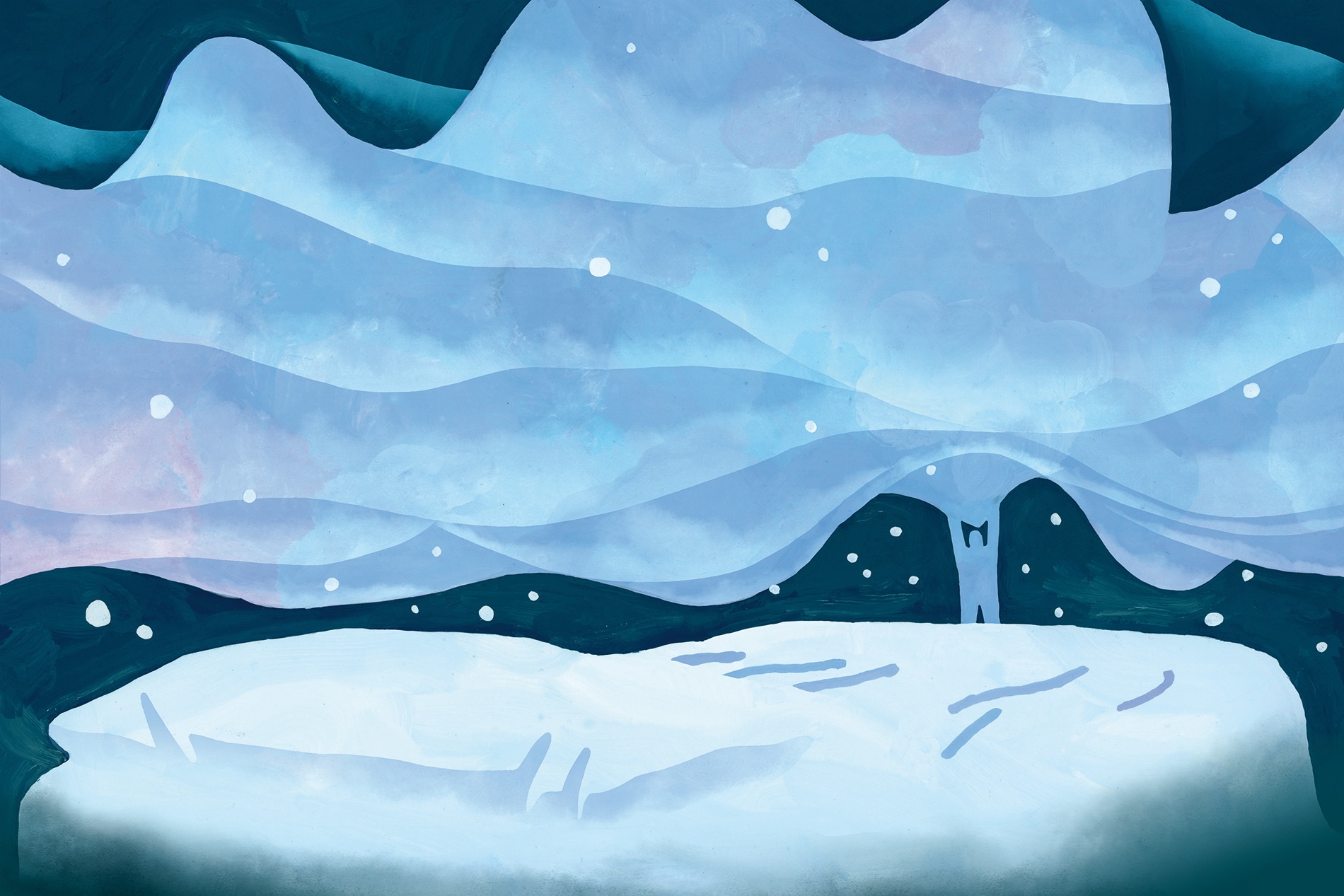
Sleep Secrets
Why do teens sleep so late? Is there a scientific way to measure how sleepy you are? Pioneering sleep scientist Mary Carskadon has answers—and is still discovering new frontiers.
To a passerby, nothing about the building at 300 Duncan Drive suggests that it could be a center of cutting-edge research into one of the most crucial—and enigmatic—regulators of human health. The white clapboard house, with an overhanging second story and a pair of attached cottages, sits on a leafy street in East Providence. It began life in the 1920s as a family home, and only a small yard sign hints at its more recent function.
Yet the Bradley Hospital Sleep Research Laboratory has long been a leading facility in its field. In the ’90s, it came to prominence for studies revealing an epidemic of sleep deprivation among U.S. teenagers—findings that inspired a global movement to push back high-school start times. In 2021, the lab was awarded a $10 million grant by the National Institutes of Health to develop the world’s first research center focused on the connections between sleep, circadian rhythms, and mental health in children and adolescents. Today, Bradley-linked investigators continue to pursue that mission, along with studies related to sleep’s role in scourges ranging from Alzheimer’s disease to opioid use disorder.
A single scientist has overseen all these explorations: Mary Carskadon, director of chronobiology at Bradley Hospital and a professor of psychiatry and human behavior at Brown’s Warren Alpert Medical School. Like the structure she works in, Carskadon, 76, gives little outward sign of eminence. A short, round-faced woman who favors comfortable athletic clothes, she has a wry sense of humor and a streak of purple in her cropped white hair. “I’m just a small-town kid who worked hard, kept her head down, and got lucky,” she protested a few years ago when I told her she was among the four pioneers I’d be spotlighting in my new book Mapping the Darkness: The Visionary Scientists Who Unlocked the Mysteries of Sleep.
In the realm of sleep science, however, Carska-don is true royalty—a direct heir to the legacy of Nathaniel Kleitman, the field’s founding ancestor. She has won just about every award the field has to offer, including one named after the founder himself. (An award has been named after Carskadon, as well.) Her research, which began when women scientists were a rarity, has helped shape the discipline over the past half-century. And her discoveries have changed millions of lives.
“Mary laid the foundation for everything we know about adolescent sleep,” says Jodi Mindell, a professor of psychology at St. Joseph’s University in Philadelphia and board chair of the Pediatric Sleep Council. “Every person who’s a pediatric sleep researcher can trace their genealogy back to her.”
The most surprising thing about Carskadon’s career, however, may be this: She wandered into it by accident.
“Mary laid the foundation for everything we know about adolescent sleep. Every person who’s a pediatric sleep researcher can trace their genealogy back to her.”
The Dawn of Sleep Science
To understand Mary Carskadon’s place in sleep science history, it helps to start with physiologist Nathaniel Kleitman—a refugee from Czarist Russia who escaped on a false passport the day World War I broke out. Within a decade, he’d launched the world’s first dedicated sleep lab at the University of Chicago, where he subjected research participants (including himself) to 100-hour bouts of wakefulness, among other tests and tortures.
Kleitman was the world’s only full-time sleep researcher for the next 30 years or so. He established many of the field’s basic protocols and wrote its first, monumental textbook. In 1938, he and an assistant spent a month in Kentucky’s Mammoth Cave, trying to see if it would be easier to shift their sleep-wake rhythms from a 24- to a 28-hour cycle in the absence of external cues of day and night. Though the experiment was inconclusive (the assistant adjusted; Kleitman couldn’t), it stirred a media sensation, thrusting sleep science to the forefront of public consciousness for the first time.
What got other scientists interested in sleep, however, was a discovery Kleitman’s PhD student Eugene Aserinsky reported in 1953. Aserinsky had set out to observe people’s eye movements while they slept, using a machine called a polygraph that could measure muscle impulses and brain waves simultaneously. Periodically, he found, subjects’ eyes jerked back and forth, while their brains’ electrical patterns resembled those of waking.
Aserinsky dubbed this phenomenon rapid eye movement (REM) sleep and found that it coincided heavily with dreaming. Previously, most experts had seen sleep as cerebral quiescence; now it was clear that the sleeping brain could be as active as the waking brain. But what function did this strange state serve? Aserinsky didn’t stick around to find out. Before the paper was published, he left Chicago for a job researching the effects of electrical stimulation on fish.
Another student of Kleitman’s, however, sensed REM’s revolutionary implications. William Dement was studying medicine, with the aim of becoming a psychiatrist. REM sleep’s regular recurrence throughout the night, he thought, supported one of Sigmund Freud’s pet theories: that dreams were a “safety valve” for forbidden desires that might otherwise erupt into waking consciousness as psychosis. As he probed that possibility, Dement unearthed an array of clues that REM was vitally important. In newborns, it constituted 50 percent of sleep time, suggesting that it played a role in neurodevelopment. In adults, it dwindled to 20 percent but rebounded strongly when individuals were deprived of it. Such findings, published in major journals, drew growing numbers of researchers to the field.
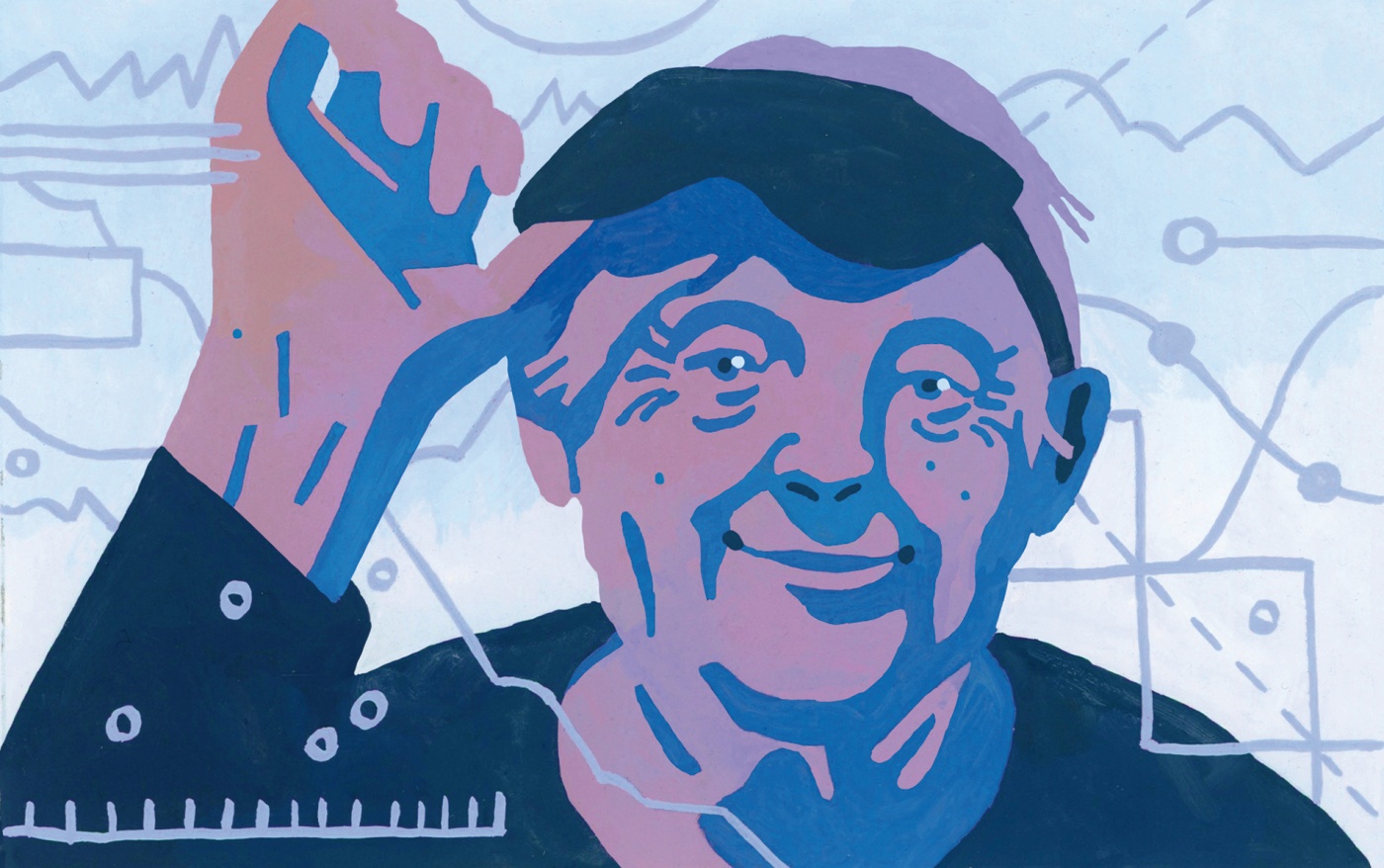
Dement, who started his own sleep lab at Stanford in 1963, never did prove that REM deprivation triggered psychosis. But he and others found that REM sleep was linked to other intriguing phenomena. During REM, for example, the brain induced paralysis to keep animals (including humans) from acting out their dreams. And while healthy sleepers usually took about 90 minutes before entering their first REM period, those with narcolepsy tended to get there much faster—both at night and during daytime sleep attacks. Most patients also suffered from brief bouts of paralysis, known as cataplexy, resembling those associated with dreaming. These symptoms seemed to reflect a breakdown in whatever neural mechanisms governed REM.
By the late ’60s, evidence was mounting that other aspects of slumber were intricately tied to physical, cognitive, and psychological health. Researchers found that deep sleep was essential to memory consolidation and sleeping pills could leave patients confused—in part because they altered proportions of REM and non-REM sleep. The breathing disorder later dubbed sleep apnea, which could cause dangerous cardiovascular problems, was also coming onto scientists’ radar.
Inspired by these developments, Dement launched the Stanford Sleep Disorders Clinic in 1970—the first facility of its kind and a proving ground for the nascent field of sleep medicine. That milestone in sleep science came just a few weeks after another one: Carskadon’s arrival as Dement’s lab assistant.
It happened through a family connection: Dement’s wife was a cousin of Carskadon’s. Carskadon ran into him at a relative’s wedding in the summer of 1970, just as he was launching the first modern sleep clinic at Stanford University.
Without this bit of serendipity, Carskadon might have ended up in a very different profession. She’d spent her early years in suburban Kettering, Ohio, and rural Elizabethtown, Pennsylvania. Her father was a civil servant and an Air Force Reserve officer, her mother a homemaker. As a child, Mary was an avid reader, drawn to the adventures of Tom Swift and the Hardy Boys. She had a stubborn streak and a wide-ranging curiosity—and in junior high, she developed a yen to learn about the human brain. When she asked if there were any books on the topic, however, the school librarian answered “no.” Only years later did it strike her that the response might have been different if she’d been a boy.
Experts held that teens needed less sleep than younger kids, and that their daytime drowsiness stemmed from staying up late. The campers’ [results], however, told a different story.
In high school, Carskadon got straight As and made the field hockey and tennis teams. But no one suggested that she could accomplish anything extraordinary. Her mother warned that she might be hurt if she set her sights too high. Her father encouraged her to become a schoolteacher; that was a way, he said, for a girl to “make a difference.”
The idea didn’t thrill her, but she had no better ones. She went to nearby Gettysburg College, where she studied psychology and 18th-century literature; she majored in psychology because it seemed practical. After graduating in 1969, she found a job as a social worker in Washington, D.C., but quit after realizing how little she could do to help her impoverished clients. Back home, she took on temp work and was accepted into a graduate program in educational psychology at Penn State. “It was something to do,” she says.
After the wedding, however, she got a call from Dement, asking if she’d like to work in his lab. (Years later, she learned her dad had told him she was a little lost and asked him to hire her.) She headed west with two friends in a borrowed station wagon and once at Stanford, she later told an interviewer, “They pushed me out the door and I landed on Dement’s doorstep.”
Her new boss started her on simple tasks, ratcheting up the challenges as she mastered them. He taught her to apply electrodes for sleep runs; to analyze polygraph records; to run sleeping pill studies; to run more complex trials. He made her a teaching assistant in his popular undergraduate course, Sleep and Dreams. He gave her a copy of The Elements of Style, then handed her manuscripts to polish. It wasn’t just that she was family; he saw qualities in Carskadon that she didn’t see herself. “She was an excellent writer,” Dement, who died in 2020, told me. “She would edit my grant proposals and really make them sing.” He prized her swiftness at learning new skills, her organizational chops, her gift for connecting with students.
Still, Carskadon wasn’t sure she’d found her calling. The event that convinced her came in 1973. By then, researchers had discovered that a brain structure called the suprachiasmatic nucleus (SCN) acts as a master clock, coordinating mammals’ circadian rhythms. Dement was curious about the relationship of that clockwork to sleep’s internal structure. What would happen to REM and non-REM sleep stages if the sleep-wake cycle was divorced from the 24-hour day?
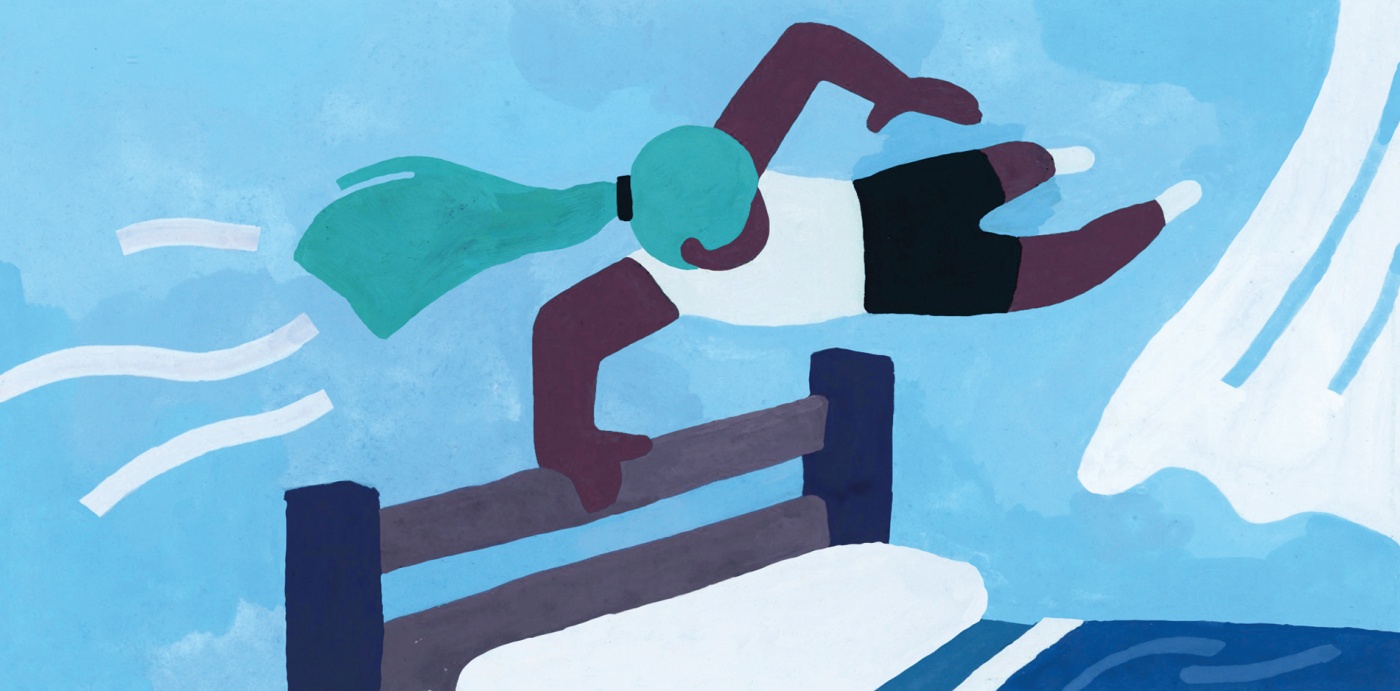
Dement designed a trial to gauge the effects of a “day” lasting just 90 minutes, and he assigned Carskadon to conduct it. In the study, five volunteers tried to sleep for 30 minutes and stay awake for 60, repeating the cycle over five 24-hour periods. Carskadon and her assistants took turns running the polygraph and administering tests of mood, sleepiness, and cognitive performance.
The results held several surprises. For example, REM appeared only in alternating cycles—but when it did, it arrived more quickly. The effects during waking were unexpected, too: The more REM subjects had, the more alert they reported feeling; the more slow-wave sleep, the drowsier.
The meaning of these findings was uncertain at first, though they would eventually shed light on issues ranging from sleep medication side effects to traffic safety. For Carskadon, however, the study brought a moment of clarity. As she plotted the chart of the sleep stage versus sleepiness correlation, she recalls, “This beautiful ‘U’ shape emerged. It was just a perfectly beautiful set of data. I thought, Oh my! This is so cool! It lit the lightbulb: This is what I want to do.”
Welcome to sleep camp
In 1976, Carskadon entered Stanford’s PhD program in neuro- and biobehavioral sciences. Her initial project was to solve a problem that had cropped up during the 90-minute day study: how to measure daytime sleepiness in a precise way. The most advanced tool available required subjects to rate their alertness on a scale of 1 (wide-awake) to 7 (drifting into sleep). But the test was too subjective, Carskadon had recognized, to be fully reliable.
That spring, she and a few collaborators set out to develop the first objective measure of sleepiness. Carskadon named it the Multiple Sleep Latency Test, or MSLT. Every two hours, subjects were put to bed in a dark, quiet room, hooked up to a polygraph machine, and asked to lie still and try to fall asleep. If slumber didn’t occur within 20 minutes, the session was terminated. If the subject did doze off, the session was ended after a 90-second snooze. Each run was scored from 0 to 20, with the numbers indicating minutes before sleep onset; the top score meant the session had passed without a wink.
When the researchers tried the MSLT on volunteers who’d been deprived of different amounts of sleep, they found the next day’s latency scores declined in direct proportion. After extensive trials, they classified a score of 5 or less as indicating extreme sleepiness, 5-10 signified borderline impairment, 10-15 denoted manageable sleepiness, and 15-20 meant full alertness.
Carskadon saw the potential for examining basic questions about human development: How much sleep do children really need? How do those requirements change throughout their youth?
The MSLT was Carskadon’s first great contribution to sleep science. It’s still used today for clinical tasks ranging from narcolepsy screening to drug trials. It also enables researchers to explore how the propensity to sleep varies around the clock in different population groups and under different conditions.
Carskadon would use this tool for another pivotal investigation: the decade-long series of studies known as the Stanford Summer Sleep Camp. The inspiration came from Stanford’s chief of psychiatry, Thomas Anders, who envisioned a summer program where researchers could study the relationship between sleep and attention deficit hyperactivity disorder (ADHD) in children. But Carskadon saw the potential for a broader set of studies, conducted over several years, examining basic questions about sleep and human development: How much sleep do children really need? How do those requirements change throughout their youth? How do variations in bedtime and wake time affect their daytime alertness and mood?
She’d hit upon a perfect PhD project. For the camp site, Dement commandeered a dormitory called Lambda Nu House. Carskadon set up four polygraphs in the dorm’s library, with cables running down the hall to a console placed above each bed. The kids, recruited from local families, started arriving that June—batches of four or five 10- to 12-year-olds, who stayed for at least three days. All were put to bed at 10 each night and were awakened at 8 the next morning. They underwent MSLTs and other tests throughout the day. In between, Carskadon and her crew led recreational activities: volleyball, board games, Ping-Pong, bowling.
After three summers, Carskadon had enough data to complete her thesis, whose most striking finding would lead to fundamental changes in science’s view of children’s sleep. One of the questions that Carskadon had explored was why teens often seemed so sleepy, nodding off in class and spending half the day in bed on weekends. “Most parents are familiar with this stereotype,” Carskadon wrote. “What is the basis of this change in behavior?”
Expert consensus held that teens needed less sleep than younger kids, and that their daytime drowsiness stemmed from staying up late for homework and social activities. The campers’ MSLTs, however, told a different story. Every kid followed a schedule that allowed for 10 hours of sleep. The youngest campers remained alert all day on that regimen. Yet once they reached puberty, they began to show increased sleepiness, particularly in the afternoon. Those in advanced puberty dozed off during 52 percent of tests. The experts seemed to have it wrong: Perhaps older kids needed more sleep than younger ones—or perhaps they needed to run on a later timetable.
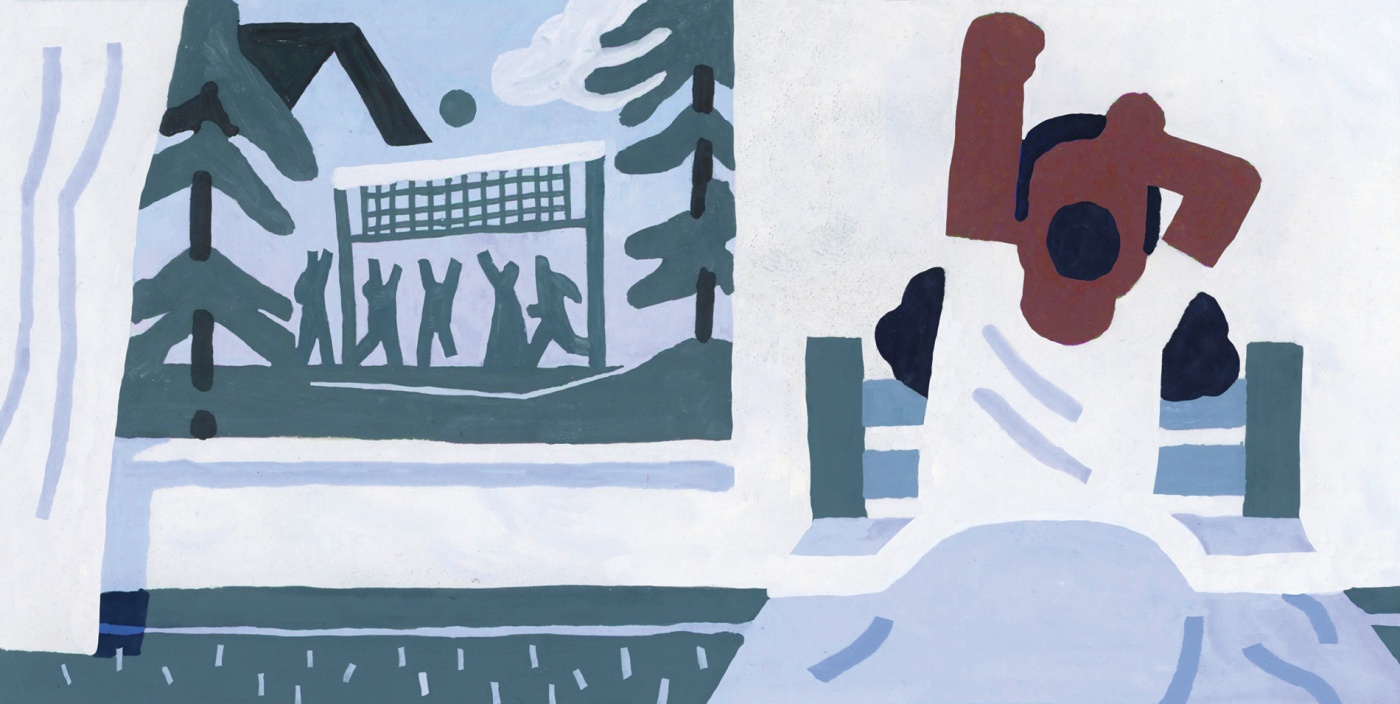
Either way, this finding had worrisome implications for the way Americans (and people in many other countries) raised their children. Typically, high schools and middle schools started the day earlier than elementary schools. Could teens make up for lost shut-eye by sleeping in on weekends, or did their weekday schedules saddle them with a sleep debt that could never be repaid? If they did carry such a debt, how seriously did it affect their well-being?
Further research would be needed to answer such riddles, Carskadon knew—a task that would become her all-consuming mission.
The science behind teens sleeping late
Carskadon continued to run the camp for the next six summers, publishing initial findings while toiling as a research associate at Stanford. (She also played bridge with the octogenarian Kleitman, who stayed with the Dements while participating in a study of sleep and aging.) But by 1985, she recalls, “I thought it might be time to test my wings.”
That opportunity came in the form of a call from Tom Anders, who’d become chief of child and adolescent psychiatry at Brown as well as academic director of Bradley Hospital, the nation’s oldest psychiatric facility for children. He asked Carskadon if she wanted to start a sleep lab of her own.
She arrived in Providence that September, the day after Hurricane Gloria hit town. The power was out, and downed tree limbs lay everywhere. Days passed before she could access her lab—at that point, a cramped space in the hospital basement. It took a while longer to find funding sources and to develop new methods to explore the territory she’d begun to uncover. In 1989, the lab moved to its current home, with four polygraph-equipped bedrooms in the basement and offices and classrooms on the upper floors.
When their day started too early, many high school kids plunged into REM sleep as quickly as narcolepsy patients. “The students may be in school, but their brains are at home on their pillows.”
And then the seminal papers started pouring out. In 1990, Carskadon published a pair of studies revealing some of the harmful impacts of insufficient sleep on teens, including higher risks of drug and alcohol use and depression. In 1993, she published a study in the journal Sleep, based on surveys of 2,000 elementary school children, showing that kids who’d entered puberty preferred a later sleep-wake cycle, and reached peak alertness later in the day, than younger schoolmates—the first real evidence that adolescents underwent a biologically driven phase shift. Later studies, based on 24-hour monitoring of melatonin levels in kids’ saliva, confirmed that hypothesis. She also found that when their day started too early, many high school kids plunged into REM sleep during MSLTs as quickly as narcolepsy patients. “The students may be in school,” she wrote, “but their brains are at home on their pillows.”
Carskadon didn’t just report those results in academic journals. She spoke to local school boards and regional psychiatric societies, to national and international child development conferences. And people listened. In 1996, Edina, Minnesota, became the first municipality to push back high school start times based on her data; other cities, including metropolises such as Minneapolis and Seattle, eventually followed suit. So did school districts in other countries, from Australia to South Korea.
In 2014—after studies by other researchers showed improvements in attendance, test scores, sick days, and car crashes at schools with later start times—the American Academy of Pediatrics issued a statement recommending that high schools and middle schools start no earlier than 8:30 a.m. More health organizations took up the call. In 2020, California became the first state to pass legislation based on those guidelines. In 2023, Florida became the second.
With around 80 percent of U.S. high schools still ringing the opening bell before 8:30, it’s too soon to declare victory for the movement that Carskadon launched. But the momentum seems to be heading in the right direction.
A down-to-earth mentor
Although Carskadon is best known to the public for her work on adolescent sleep, she’s also admired among her peers as an educator and mentor. She has long taught an undergraduate sleep course at Brown, awakening generations of students to the fascinations of sleep. She has trained hundreds of undergrads in the rudiments of sleep research through her Dement Fellowship program, established in 1997. And over the decades, she has nurtured dozens of graduate students and postdocs seeking to make their own mark in the field.
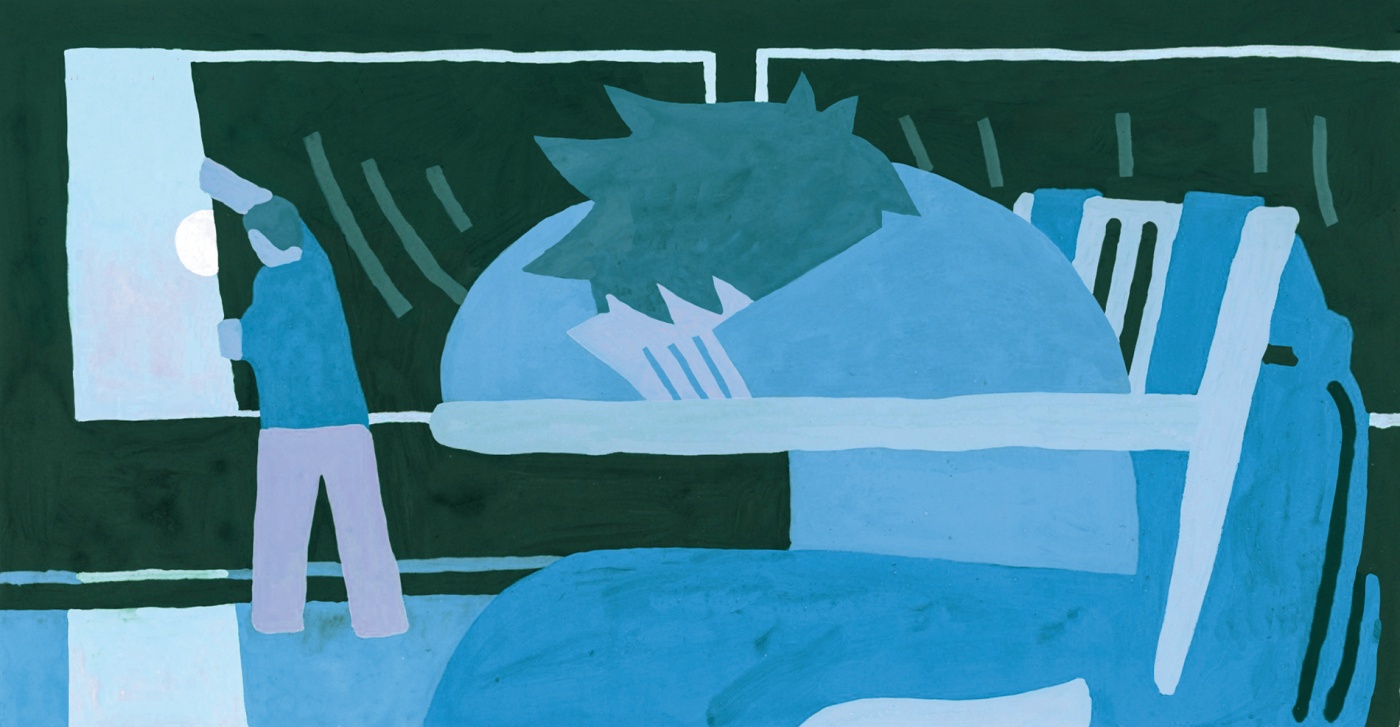
One person who has benefited from such attention is Katherine Sharkey, medical director of the Sleep for Science Research Laboratory at Brown, associate dean for gender equity and associate professor of medicine at Alpert Medical School, and associate professor of psychiatry and human behavior at Brown. Sharkey interned for three years with Carskadon after earning her BA from Penn, moved on to Rush University for an MD and a PhD, and returned to Brown as a faculty member in 2007. “I wouldn’t have my career if it weren’t for Mary,” Sharkey says. “She had me straight out of college, but I felt she was somebody I could talk to and who would take me seriously. That was critical to my professional development.”
A more recent mentee is Diana Grigsby-Toussaint, an associate professor of behavioral sciences and epidemiology at Brown, who was among the first grant recipients of the NIH Centers of Biomedical Research Excellence (COBRE) program at the Bradley Sleep Lab. Grigsby-Toussaint’s project examined how access to green space, such as parks and forests, influences children’s sleep and mental health. Groups of elementary school students from a range of socioeconomic and ethnic backgrounds wore smartwatch-like devices that tracked their sleep duration and timing, activity levels, and light exposure; a special GPS system detected the proximity of grass and trees. Initial analyses suggest that green space exposure had positive impacts both day and night.
Grigsby-Toussaint joined Brown’s faculty in 2019 from the University of Illinois. “Mary was really instrumental in helping me get established, meeting other people who worked in sleep, and making it possible to do the work I wanted to do,” she recalls. But Carskadon’s personal warmth, Grigsby-Toussaint adds, was as important as her professional support. “Sometimes you meet people who are really brilliant, and they act like, ‘You should know I’m really brilliant.’ But Mary is so down to earth. I still look forward to seeing her because I know I’m going to have a good laugh.”
Carskadon insists she’s just carrying on the tradition of her own mentors—William Dement, of course, but also an earlier guide. “When I started out, I had no idea where anything would go,” Carskadon says. “I think I’ve achieved the goal my dad set for me, which was to make a difference. I think I’m there.”
Kenneth Miller is author of Mapping the Darkness: The Visionary Scientists Who Unlocked the Mysteries of Sleep.





